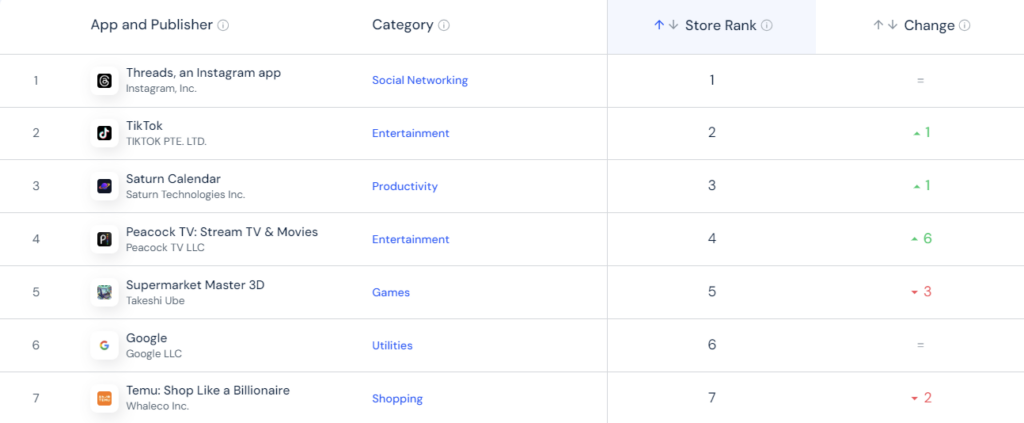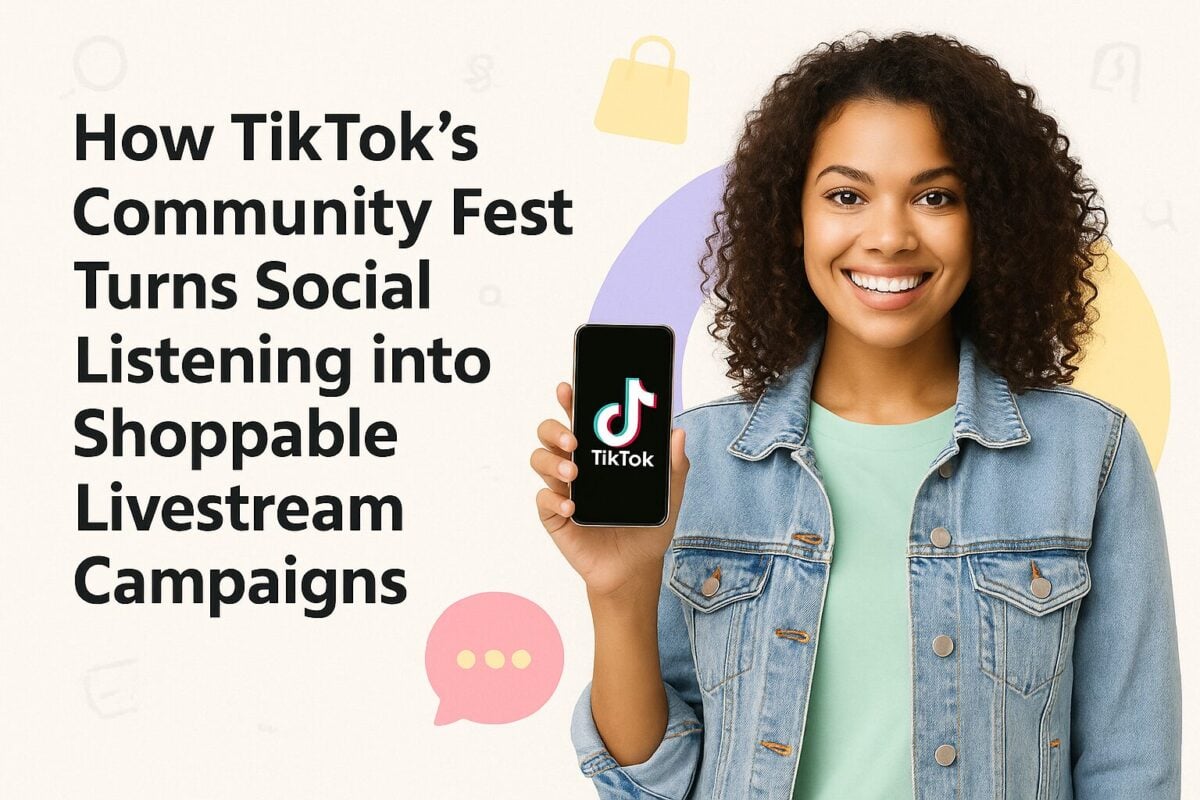The story of TikTok is a tale of two halves. In the West, teenagers grew up with the music-focused social app, Musical.ly, while in the East, Douyin (branded as TikTok for the western world) dominated the scene. In 2018, these two apps merged, sparking a meteoric rise for TikTok in a remarkably short period.
Since TikTok’s merger with Musical.ly, user numbers have soared, with the platform now boasting 1.6 billion users globally. This explosive growth is partly due to ByteDance's savvy marketing campaigns, which have strategically advertised TikTok in virtually every space where young people congregate, including rival social platforms like Snapchat and YouTube.
Yet, despite its immense popularity, if you asked the average person—particularly those over 30 and not a parent—many might claim they've never even heard of TikTok. The app has one of the tightest demographics of any social network and remains largely unknown to those outside its core age group.
See just How Fast TikTok has Risen to Dominance

Jan
A Brief History of Musical.ly
Like its new stablemate, Musical.ly originated from China. It was founded by Alex Zhu and Luyu Yang in Shanghai, China in 2014. The founders’ first online venture had been an online learning platform with short (3-5-minute videos), but this did not attract enough interest to be viable. Luckily, Zhu and Yang still had available funds, so were able to rebuild, with a focus on the entertainment sector.
They chose to create a platform incorporating video and music in a social network. Zhu and Yang wanted to make it easy for people to shoot music videos which they could share with their friends.
They initially introduced Musical.ly to both China and the USA. However, the market that took most notice of Musical.ly was American teenagers, who enjoyed making videos of themselves lip-synching music. By July 2015, Musical.ly had built a substantial following, and surpassed, Facebook, YouTube, and Instagram in the iOS popularity list. Before long the site’s users have even given themselves a nickname – “musers.”
@lisaandlena JB mood ? Dance: @brookeandjess_ ♬ Favourite Girl Magik Edit - Kuya Magik
By May 2016 Musical.ly was able to claim 70 million downloads. It was becoming popular with a music-obsessed youth. And it wasn’t just lip-synchers who were uploading videos of themselves. There were now quite a few talented musicians uploading videos of original songs. Musical.ly was also catering for non-musical acts, as well, with a large niche group of youngsters making short comedy videos. We wrote some of Musical.ly’s top talent in our list of Top 19 Musical.ly Influencers.
July 2016 saw a significant innovation to Muscial.ly, with the introduction of Live.ly. This was their livestreaming platform, allowing talented youngsters to broadcast live performances.
One of the reasons for Musical.ly’s success was that they were able to get the major music companies onside. They began by making a deal with Warner Music Group in 2016, licensing its music for use in Musical.ly streams. They made similar deals with other rights holders. This meant that teenagers could easily upload short clips of themselves lip-synching copyrighted material without any legal ramifications.
TikTok Before its Merger
The Chinese company, Bytedance, introduced its new app, Douyin in September 2016. The company developed the app over just 200 days, and had 100 million users within a year, viewing more than 1 billion videos per day.
Bytedance expanded the app internationally in September 2017 but rebranded it TikTok in the international market (keeping the Douyin name in China). By January 2018, TikTok was the #1 free mobile app in several countries, including Thailand.
TikTok Buys Musical.ly
Bytedance purchased Musical.ly on 9 November 2017 for an undisclosed sum, predicted to be close to $1 billion. TikTok saw it as a way to expand into the US teenage market, already dominated by Musical.ly.
They merged existing accounts from both programs but consolidated into a single app, which they gave the TikTok name to. The original Chinese version of TikTok, Douyin, was kept as a separate app, in its home country. Unsurprisingly, given China’s size, Douyin is still huge. It has more than 300 million monthly active users.
TikTok continues the core business of Musical.ly, however. People still upload and share 15-second videos, soundtracked by music clips.
The New TikTok Has Less of a Musical Emphasis
People now upload a wider variety of videos to TikTok, than they did to Musical.ly, however. It features quite a few “cringe” videos, featuring people doing cringeworthy activities. Sure, that includes millions of videos of tone-deaf people attempting to sing but also features uncoordinated dancing, pranks went wrong, and other weird and wonderful acts.
TikTok is not just music and cringe, however. Its members upload videos containing such diverse content as dancing, cooking, doing magic tricks, playing with pets, and re-enacting comedy skits.
The Expansion of TikTok and Douyin
In September 2016, TikTok, which is known as Douyin in its home market, made its debut in China. It rapidly gained popularity in China, prompting parent company ByteDance to release an international version the next year.
Although initially introduced as a platform for sharing short-form videos, particularly for lipsyncing and dancing clips, TikTok has now evolved into a comprehensive video service catering to diverse audiences with various content options.
TikTok continues to dominate the social media app space, consistently ranking among the top apps on the Apple App Store. Its success is driven by its engaging short-form video content and powerful algorithm, which keeps users highly engaged and returning to the platform frequently. As of the latest data, TikTok remains a leading force in the global app market, reflecting its widespread popularity across various demographics.

Source: similarweb.com
For the past three years, TikTok has consistently held the top spot as the most downloaded app. Its peak was in Q1 2020, where it amassed a record-breaking 318 million downloads outside of China, marking the highest number of quarterly downloads ever.
TikTok has a global presence in over 150 countries, with a user base of more than 1.6 billion. TikTok ranks among the most downloaded apps in over 40 countries. Remarkably, 1 in 4 TikTok users is not active on any other social platform, making it an ideal place for brands to connect with new audiences and enhance their global reach.
Note
If your brand's target audience ranges from 13 to 55+ years of age, it is highly recommended that you have a presence on TikTok.
It is estimated by experts that by 2025, the number of Douyin users will exceed 835 million. Douyin has cemented its position as the biggest platform in China for knowledge, culture, and art.
Celebrities Take an Interest in TikTok
With the rise of TikTok downloads, it became inevitable that celebrities and high-profile people would take an interest in the platform. As the Guardian reported,
“The success of any burgeoning app is often tied to the early adoption of a key celebrity. The fortunes of Snapchat have been closely tied to the whims of Kylie Jenner, Instagram has Selena Gomez, and Twitter now has a certain Mr. Trump. For TikTok, late-night comedian Jimmy Fallon may be the user that pushes it over the edge in the United States.”
Jimmy Fallon spoke about TikTok videos on a segment on NBC’s The Tonight Show Starring Jimmy Fallon in November 2018. He suggested that people might like to use TikTok to upload videos of themselves lip-syncing along to standup comedy routines. He encouraged viewers to take part in a series of challenges, such as the #TumbleweedChallenge, where people stop what they’re doing and roll around on the ground like a tumbleweed while an old western movie soundtrack plays.
Skateboarder, Tony Hawkes, is another who has taken to TikTok. He has a verified account with 3.5 million followers and 22.1 million likes. While he has only shared a few videos to date, they have been hugely popular.
@tonyhawk
Even the Terminator now has a TikTok appearance, setting up his account in March. His early videos focus on fitness and health, and he has a customized hashtag, #likearnold.
@arnoldschnitzel
Other celebrities with TikTok accounts include:
The Rise of TikTok's Biggest Stars
As of 2024, TikTok continues to solidify its place as a global powerhouse in social media, evolving beyond its origins as a lip-syncing app for teens. The platform's top creators have amassed staggering followings, reflecting TikTok's growing influence across diverse demographics. Below are the five most popular accounts on the non-Chinese version of TikTok, showcasing the platform's reach and the star power driving its success:
1. Khabane Lame (@khaby.lame) - 162.9M followers, 2.5B likes
@khaby.lame
2. Charli D'Amelio (@charlidamelio) - 155.5M followers, 11.7B likes
@charlidamelio
3. Bella Poarch (@bellapoarch) - 94.1M followers, 2.3B likes
@bellapoarch
4. MrBeast (@mrbeast) - 103.5M followers, 992.9M likes
@mrbeast
5. Addison Rae (@addisonre) - 88.8M followers, 5.8B likes
@addisonre
There can be no doubt that TikTok is continuing to rise in popularity. It is far more than just a lip-synching channel for teenagers now. While its demographic is still young, its fans seem to stay with the network as they age, gradually increasing the length of the fanbase. TikTok’s purchase of Musicall.ly was a shrewd business decision that has helped the East meet the West.
Frequently Asked Questions
What impact did the merger of Musical.ly and TikTok have on user growth?
The merger significantly boosted TikTok's user numbers, contributing to its rise as a leading social media platform. Following the merger, TikTok's user base grew rapidly, reaching 1.6 billion users globally, partly due to ByteDance's aggressive marketing strategies targeting young audiences.
What types of content are popular on TikTok today?
While TikTok initially focused on music and lip-syncing videos, it has since evolved to include a diverse range of content. Users upload videos related to dancing, cooking, comedy, pranks, DIY projects, and more, reflecting a broad spectrum of interests beyond just music.
How does TikTok's algorithm contribute to its success?
TikTok's powerful algorithm personalizes content for users, keeping them engaged by recommending videos based on their viewing habits. This tailored experience encourages users to spend more time on the app, increasing overall engagement and user retention.
![Preview for The Incredible Rise of TikTok – [TikTok Growth Visualization]](https://influencermarketinghub.com/imaginary/resize?width=414&type=webp&url=https://influencermarketinghub.com/wp-content/uploads/2019/04/The-Incredible-Rise-of-TikTok-.png)


